If you are new to mountaineering or haven’t experienced much spring hiking, let’s clarify a few things about traction systems beyond snowshoes. There is a big difference between crampons and “cleats”.
Crampons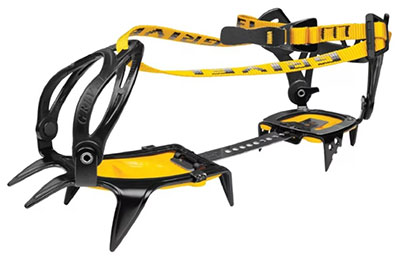
This tractions system is hardcore! Here we’re talking about serious mountaineering with more extreme conditions that would involve glacier travel, crevasse danger, ice axe, rope, harness and helmet.
You could start out with a blunt 10-point aluminum crampon for beginner adventures where the “softer” metal is sufficient for this level of mountaineering.
For me, this would include climbs in Utah such as Twin Couloirs, Temple Couloir, Cold Fusion, Everest Ridge and the Memorial or Upper Pole couloirs. You might even be able to get away with this crampon in spring snow conditions on Shasta, Whitney (mountaineers route), Adams and maybe even Baker.
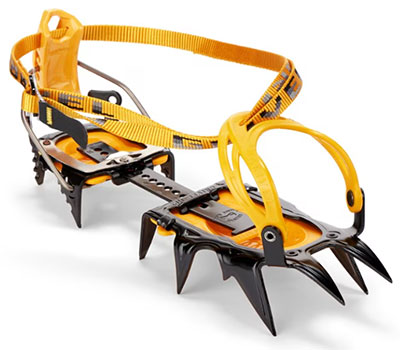 However, the requirements change when you start ramping it up with slightly more advanced terrain conditions. When your travel plans include nearly impenetrable glacial (blue) ice and No Fall Zones, a 12-point steel crampon is absolutely what you want.
However, the requirements change when you start ramping it up with slightly more advanced terrain conditions. When your travel plans include nearly impenetrable glacial (blue) ice and No Fall Zones, a 12-point steel crampon is absolutely what you want.
Examples of climbs where your gear must match an increased level of risk include ones like Hood, Gannett, Rainier, Orizaba, Izta and everything far more intense and dangerous than this very short list.
This is all based on my current level of experience.
By the way, steel crampons are also way more durable if the terrain is mixed ice and rock. They also require steel-shank boots that have very little, if any flex, in the sole. This is especially important if and when you find yourself front-pointing along some section to reach your desired objective.
Cleats
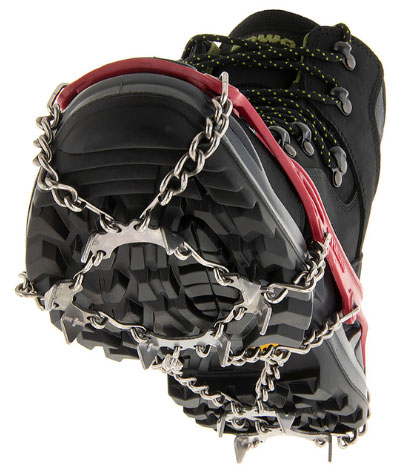 Dialing it way down now to simple spring hiking, your traction system should definitely include a good pair of ice “cleats”.
Dialing it way down now to simple spring hiking, your traction system should definitely include a good pair of ice “cleats”.
Also referred to as microspikes, these stainless-steel studs are just sharp enough to provide grip on slippery ice or hardpack snow conditions where you might fall and land on your keister.
The last thing you want is to injure your tailbone or crack your elbow from slipping and falling when this is easily avoided with some basic traction. I carry a set anytime I know we’ll be hiking in conditions that might be slick, but not steep enough to require more serious mountaineering equipment like crampons.
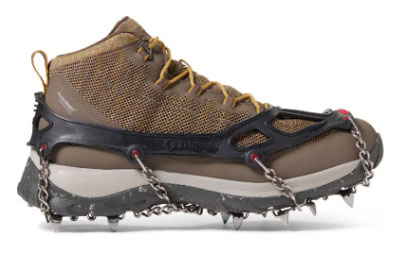 Such conditions would include popular trails where the snow is packed from extensive use and typically frozen in the early morning hours… or when the patch of glacier is super short.
Such conditions would include popular trails where the snow is packed from extensive use and typically frozen in the early morning hours… or when the patch of glacier is super short.
There are several versions on the market that offer a slight variation from brand to brand, but they are definitely not crampons in the traditional reference to that type of gear.
Ice cleats like this are made with a rubber harness that stretchs over any kind of hiking shoe or boot.
Snowshoes
While we’re on the subject of traction systems, I think it’s worth mentioning snowshoes as part of this discussion. Snowshoes are obviously not a substitute for either of these options described above. However, several brands have incorporated traction features that do help in mixed conditions that involve snow with ice. For example, my favorite snowshoes by Tubbs offer these next-level features:
VIPER 2.0 CRAMPON
- Backcountry designed crampon.
- Carbon steel toe construction with jagged teeth maximizes weighted traction and responsiveness.
- Aggressive tang in the toe crampon deliver an added degree of security on variable snow.
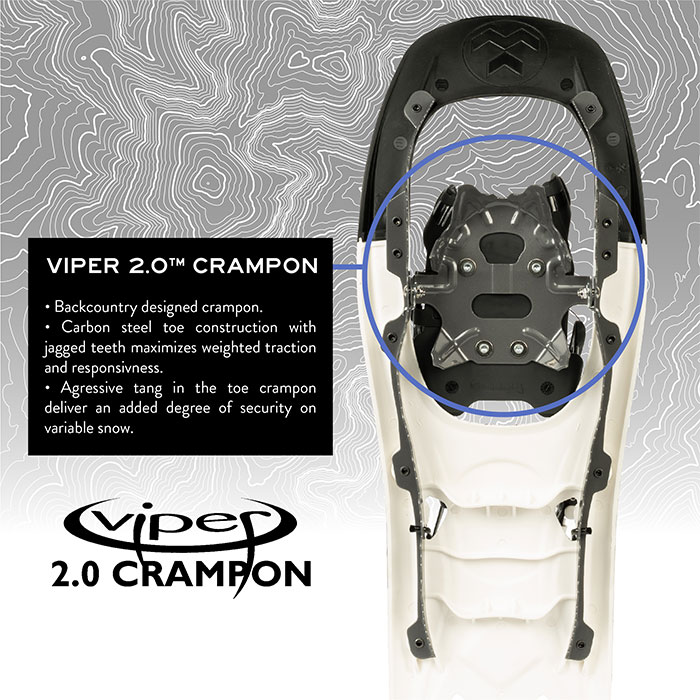
TRACTION RAILS
- 3D-Curved Traction Rails ensure superior sidehill grip in hard-packed and icy conditions.
- The curved shape helps prevent fore-aft slippage on steeper terrain.
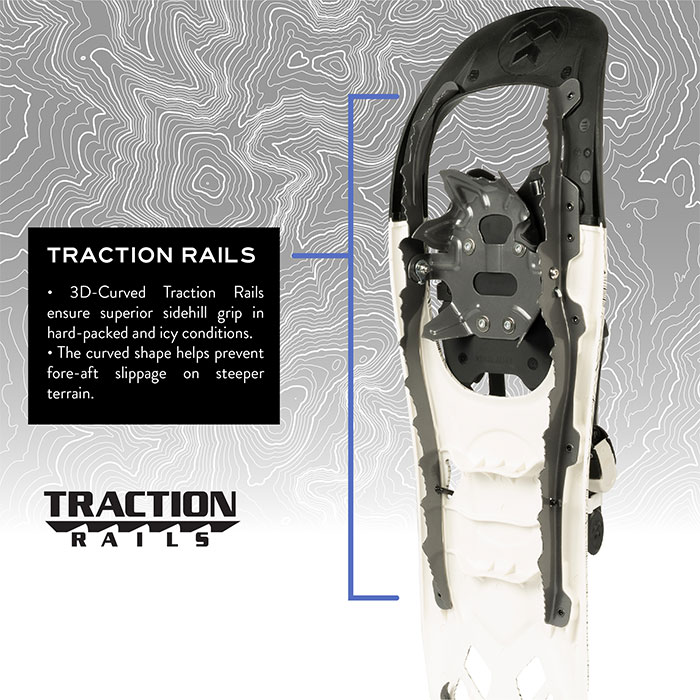
You might also want to check out the new Tubbs Flex VRT and ALP Snowshoes for 2025.
